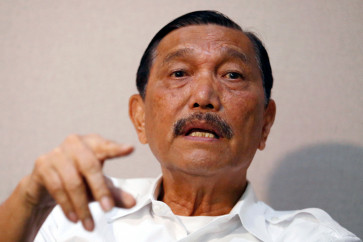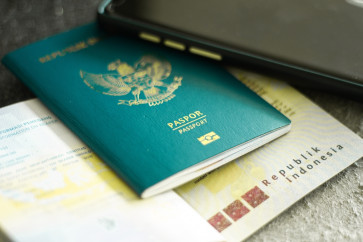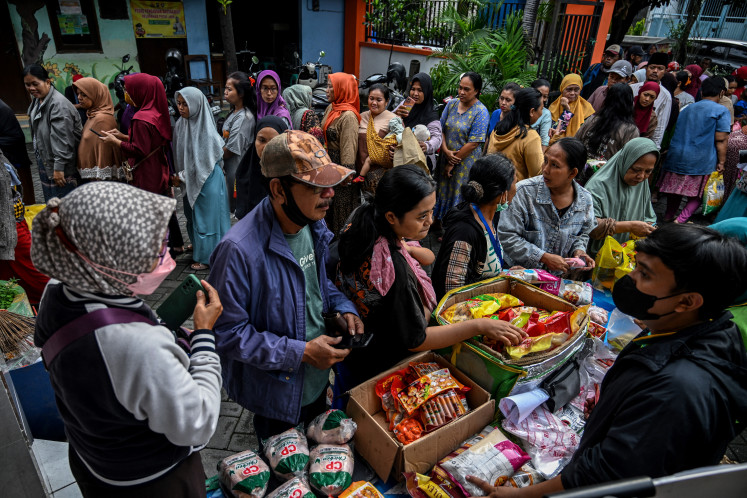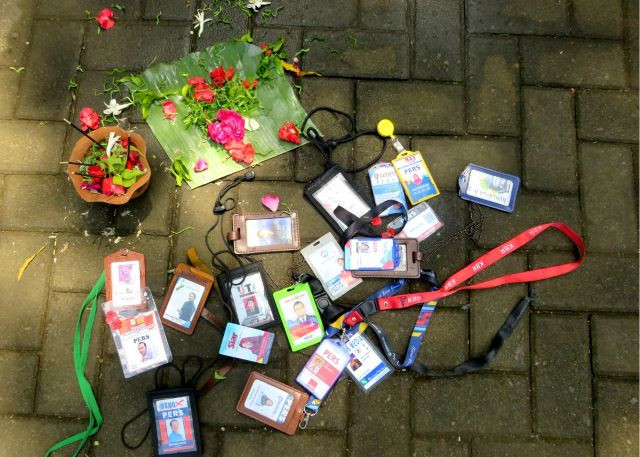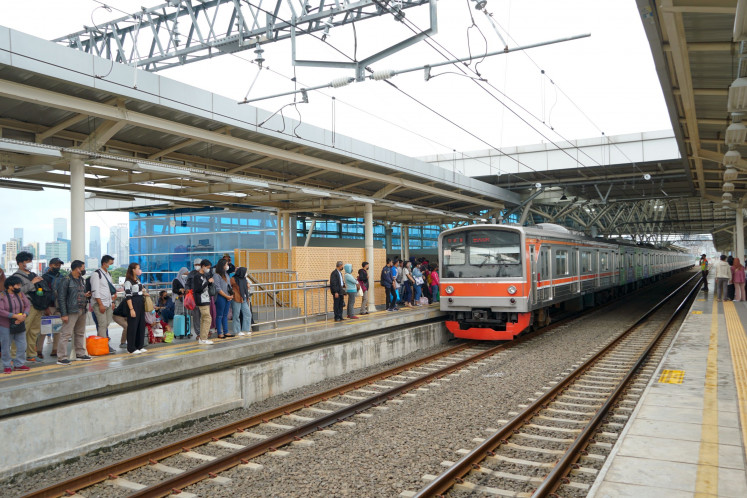IDX aims for top regional spot by 2020
The Indonesia Stock Exchange (IDX) has set an ambitious target to become Southeast Asia’s biggest bourse by 2020 in term of market capitalization, beating the Singapore Stock Exchange (SGX), which currently tops the list
Change Size

T
he Indonesia Stock Exchange (IDX) has set an ambitious target to become Southeast Asia’s biggest bourse by 2020 in term of market capitalization, beating the Singapore Stock Exchange (SGX), which currently tops the list.
As of June 23, the start of the extended Idul Fitri holiday, the IDX saw its market capitalization reach Rp 6.39 quadrillion (US$479.7 billion), while that of SGX’s stood at $661.2 billion. The former will resume trading on Monday.
IDX president director Tito Sulistio said his side’s short-term target was to have the IDX’s market capitalization surpass total assets in the banking industry, which currently stands at Rp 6.5 quadrillion.
“Singapore has a lot of publicly-listed companies, but actually, around 100 of them are Chinese enterprises that listed their shares there and are known as ‘S-Chip.’ [Market capitalization of] local companies, meanwhile, is not so great. At this rate, we can surpass them by 2020,” Tito said recently.
The IDX and SGX currently have a total of 553 and 753 listed companies, respectively.
Tito added that the IDX had launched several programs to boost its number of listed companies, as well as trading frequency and volume.
The bourse, for example, has established six go-public information centers in five major cities, including Jakarta, Surabaya in East Java and Medan, to assist regional companies that are seeking opportunities for an initial public offering (IPO).
In an effort to encourage small and medium enterprises (SMEs) as well as startup companies to go public, the Financial Service Authority (OJK) plans to lower its minimum assets requirement for IPOs to Rp 40 billion from the current Rp 100 billion. The OJK said it expected to officiate the new rule in the second half of the year.
In 2016, the IDX saw 16 companies going public, while at the same time, the SGX delisted 28 companies. In the first half of this year, the IDX saw 18 IPOs, indicating a rise in companies’ confidence to attract funds from the capital market.
OJK commissioner for financial market supervision Nurhaida said confidence was also bolstered by the boost in Indonesia’s improving economic performance, justified by major global rating agencies that raised Indonesia’s status to investment grade.
“The market situation is more supportive this year. The IDX targeted 35 IPOs last year, but it had to be revised down due to poor economic conditions. It has set the same target for this year and I think it is achievable now,” she said.
The IDX also expects to see a boost in trading volume brought on by its recent policy aimed at relaxing the margin trading requirement.
In February, it decided to allow securities firms with a net adjusted working capital (MKBD) above Rp 250 billion to engage in margin trading on all eligible stocks, while those with less working capital can only margin trade the IDX’s 45 most liquid stocks (LQ45).
Out of 105 brokers, 32 have an MKBD of above Rp 250 billion.
Tito added that margin trading financing company PT Pendanaan Efek Indonesia (PEI) would be operational by the second half of this year. The new company will cater to securities firms with an MKBD under the set requirement to run margin trading activities.
“Easing the IPO process, boosting margin trading and adding more investors — this is our strategy,” Tito said.
According to Indonesian Central Securities Depository (KSEI) data, Indonesia has as of early June slightly more 1 million registered investors, with a relatively equal number of stock investors and mutual fund investors. By the end of last year, the figure stood at a little less than 900,000.
KSEI president director Friderica Widyasari Dewi said that local investors’ ownership in the stock market had already exceeded foreign ownership.
“Currently, foreign investors have 48 percent ownership in the stock market. In the past, the proportion stood at 60 to 75 percent,” she said.
However, with the increasing number of investors, the bourse still has much work to do to increase its number of active investors.


